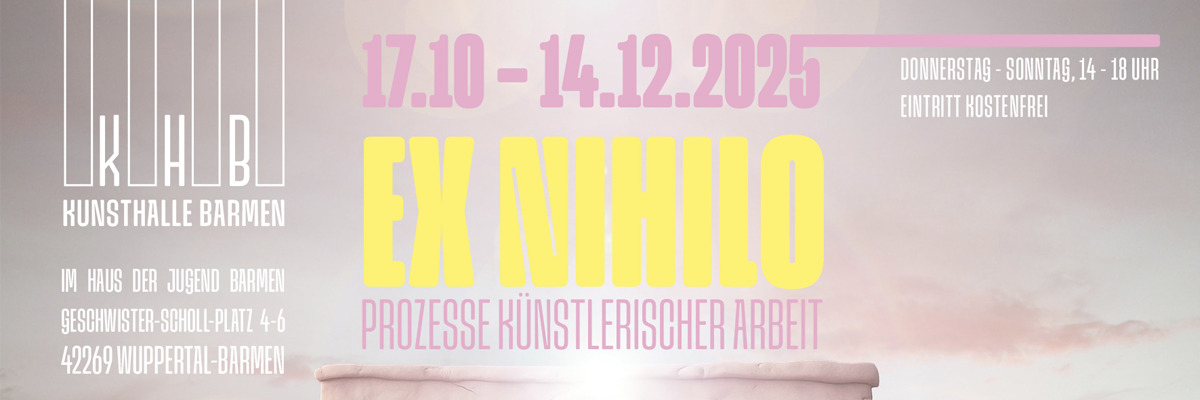
Ana Manso
La Table Ronde
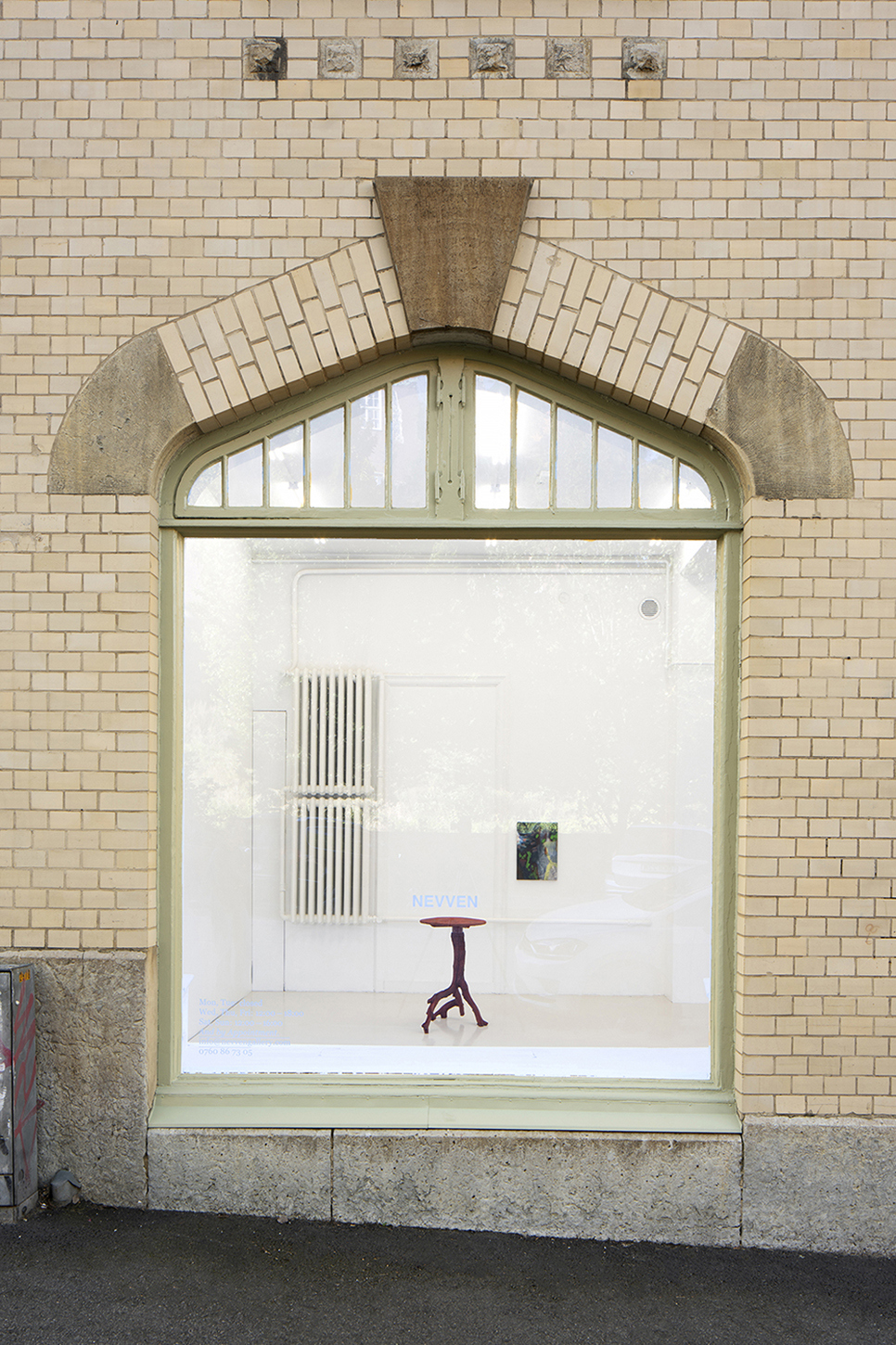
Ana Manso, “La Table Ronde” installation view.
Advertisement
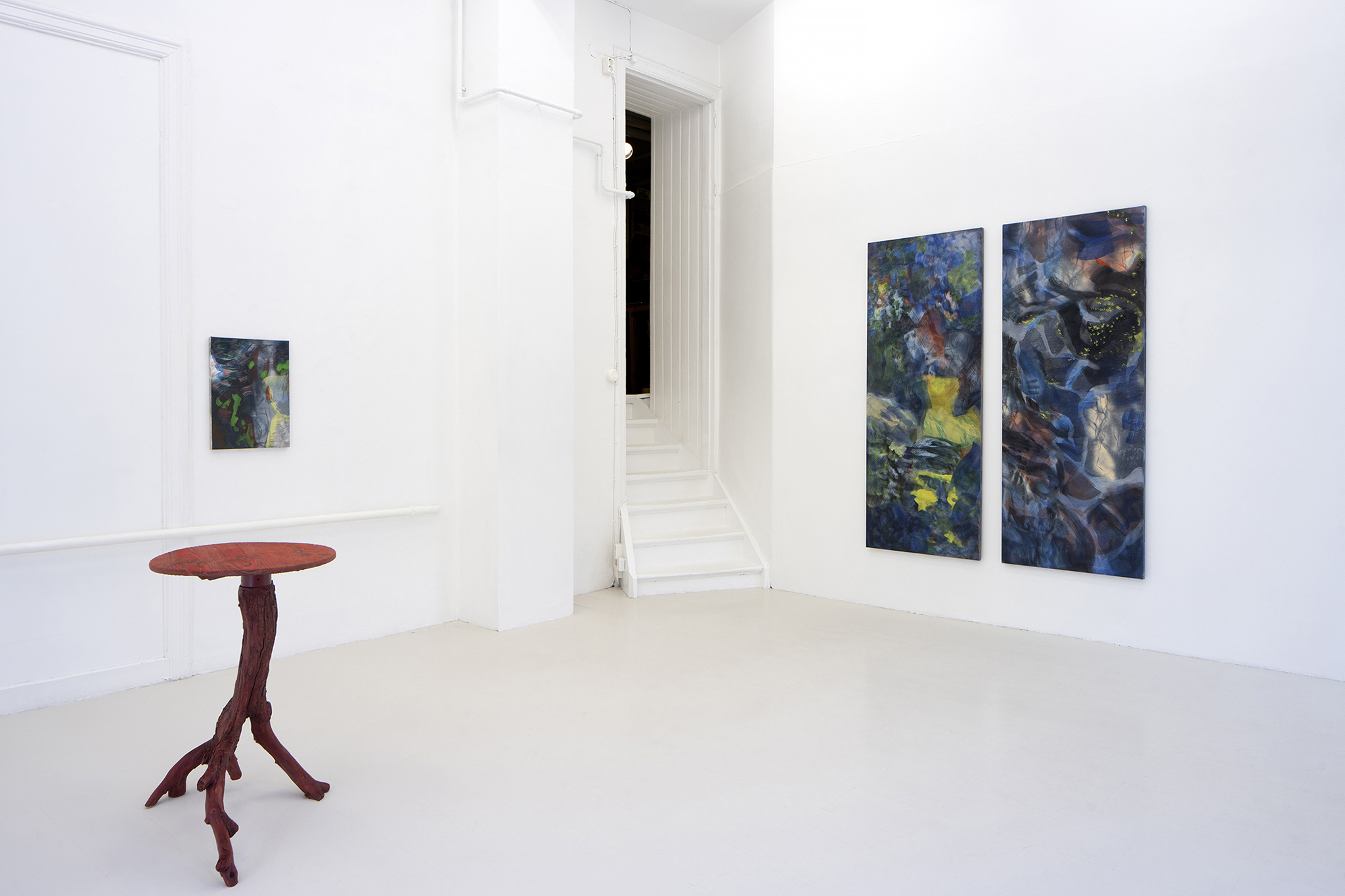
Ana Manso, “La Table Ronde” installation view.
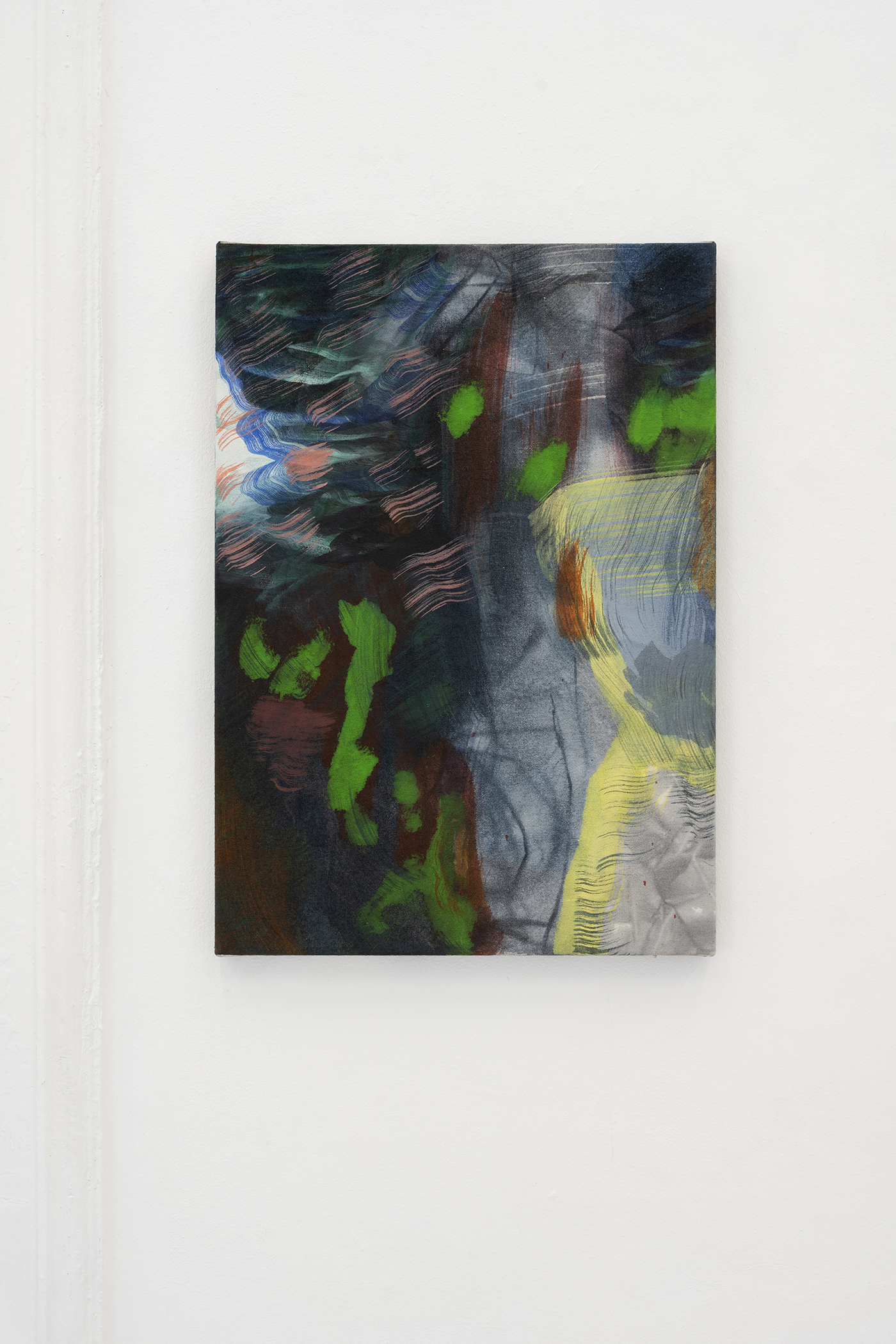
Ana Manso, “web”, 2024 (Tie-dye, acrylic and oil on canvas, 50 x 35 cm).
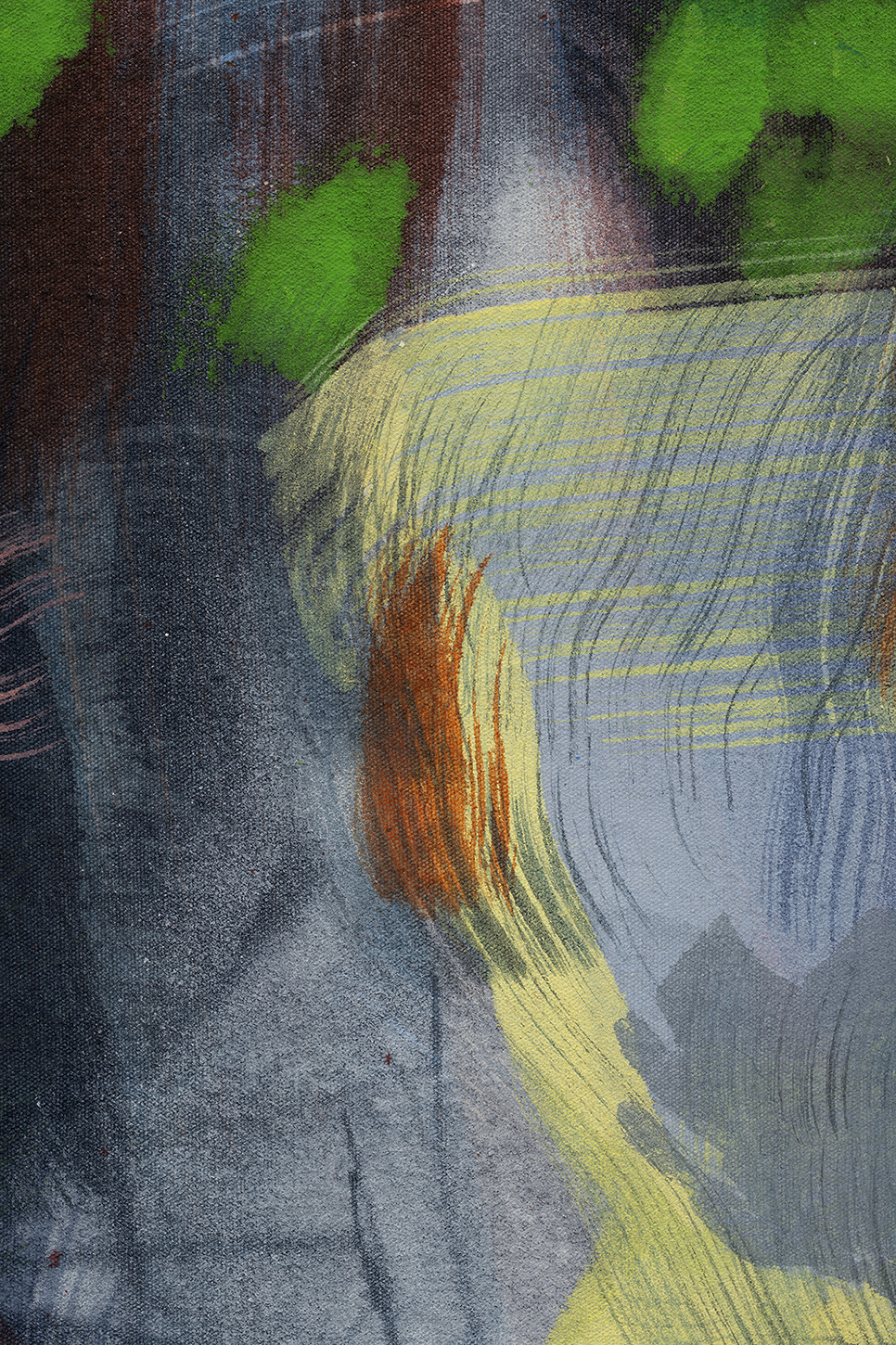
Ana Manso, “web” (detail), 2024 (Tie-dye, acrylic and oil on canvas, 50 x 35 cm).

Ana Manso, “La Table Ronde” installation view.
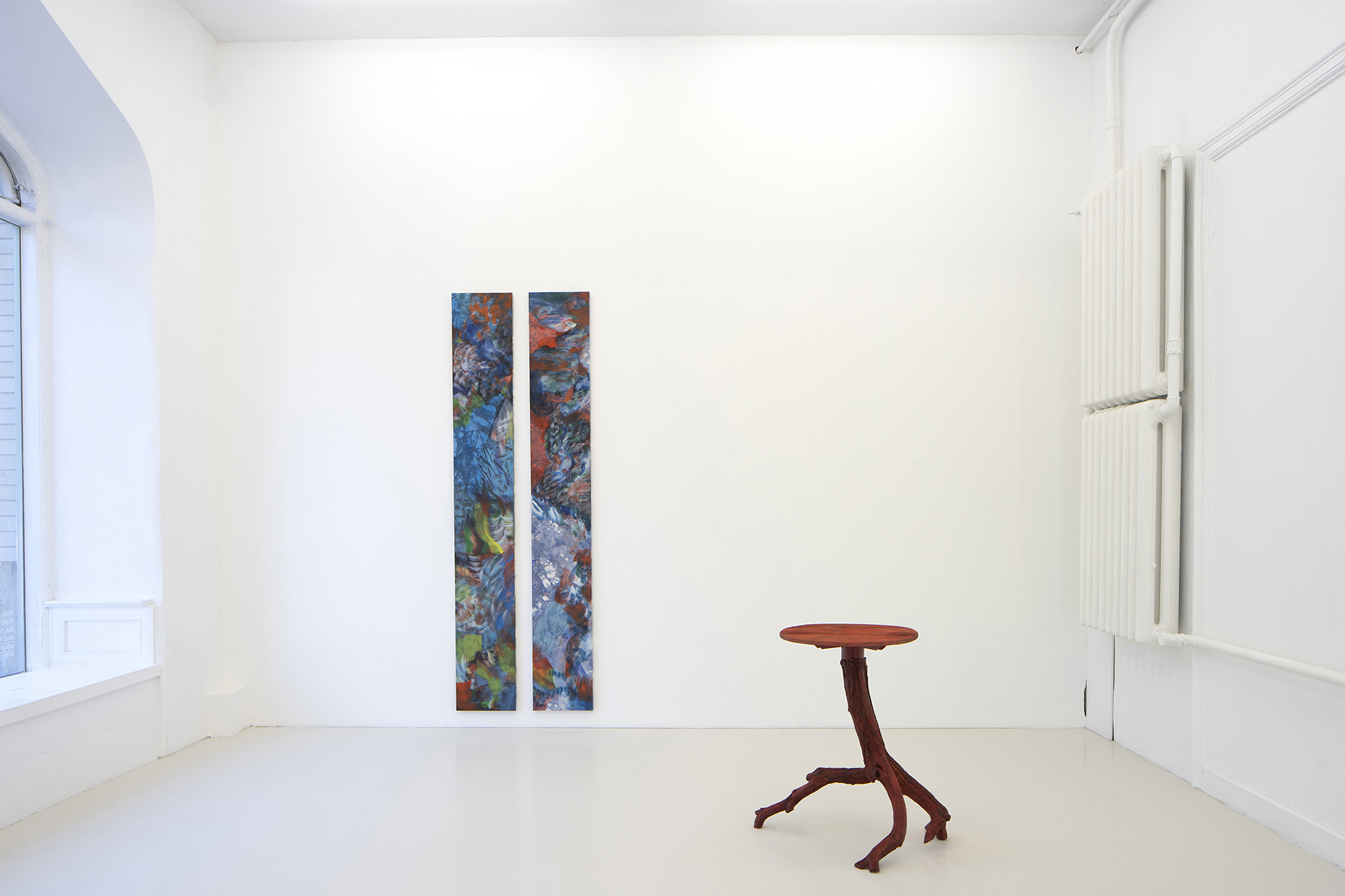
Ana Manso, “La Table Ronde” installation view.

Ana Manso, “caryatid”, 2024 (Tie-dye, acrylic and oil on canvas, diptych, 230 x 76 cm).
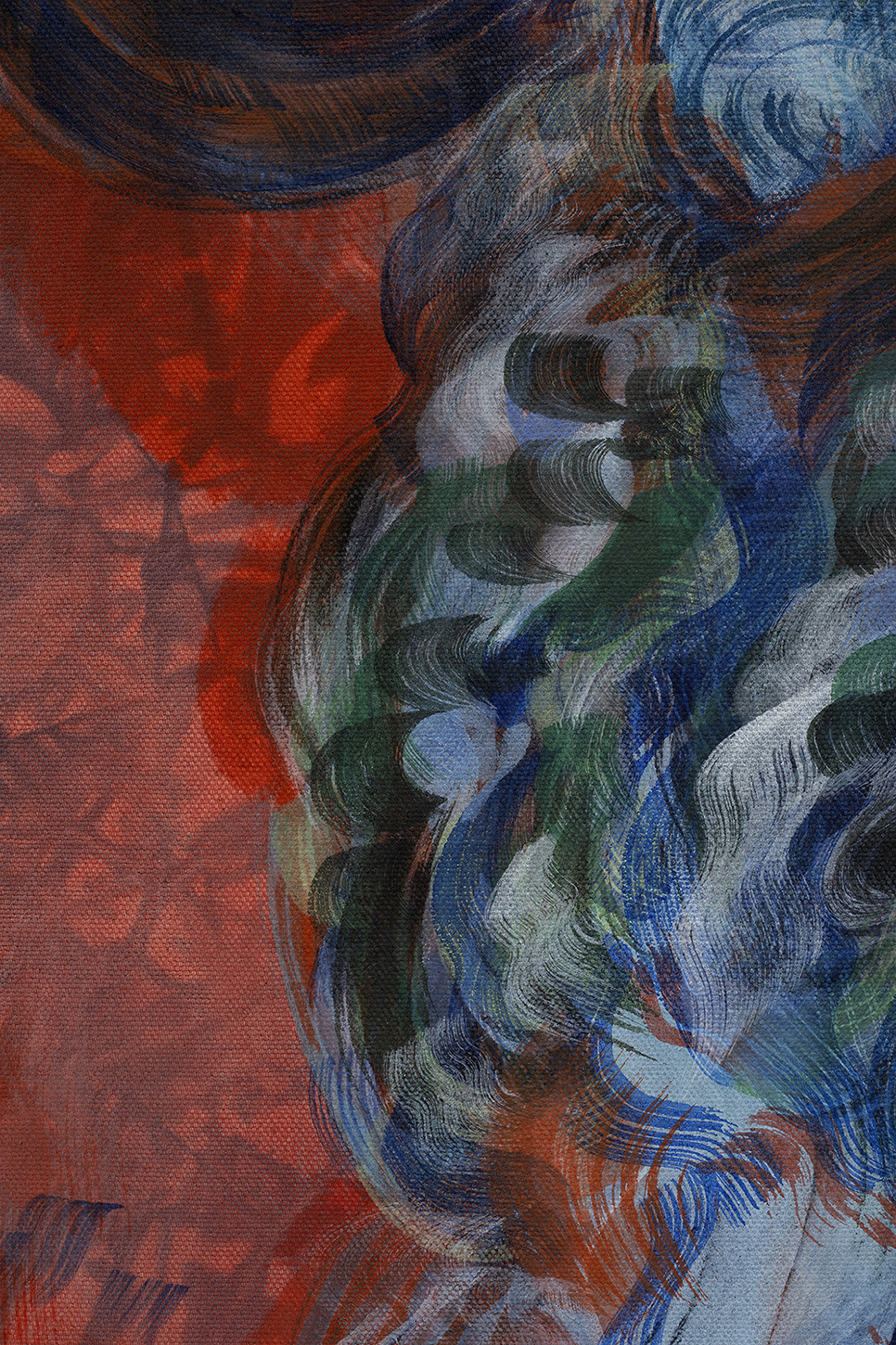
Ana Manso, “caryatid” (detail), 2024 (Tie-dye, acrylic and oil on canvas, 230 x 33 cm).
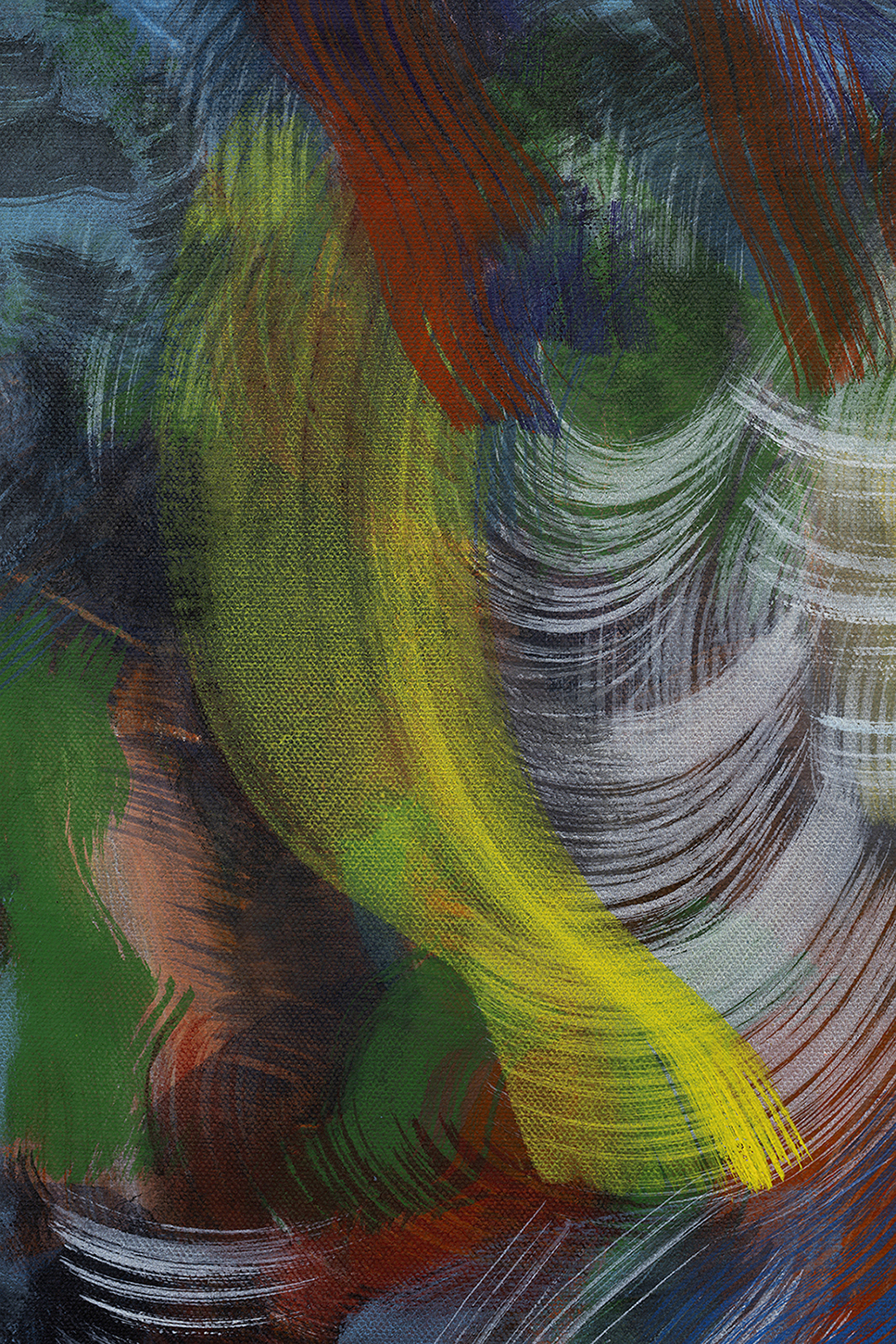
Ana Manso, “caryatid” (detail), 2024 (Tie-dye, acrylic and oil on canvas, 230 x 33 cm).

Ana Manso, “La Table Ronde” installation view.
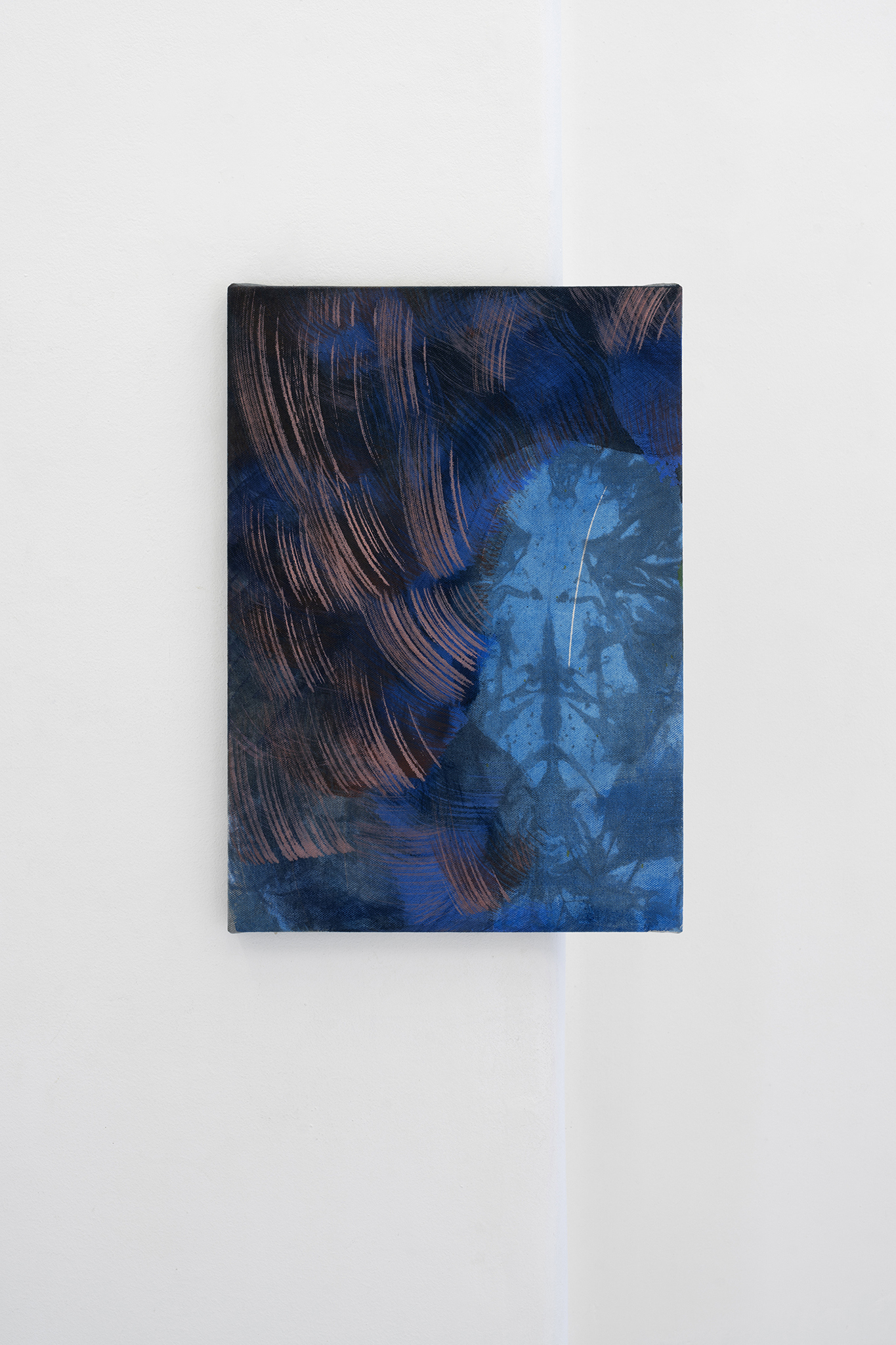
Ana Manso, “silver sea”, 2024 (Tie-dye, acrylic and oil on canvas, 50 x 35 cm).

Ana Manso, “La Table Ronde” installation view.

Ana Manso, “La Table Ronde” installation view.
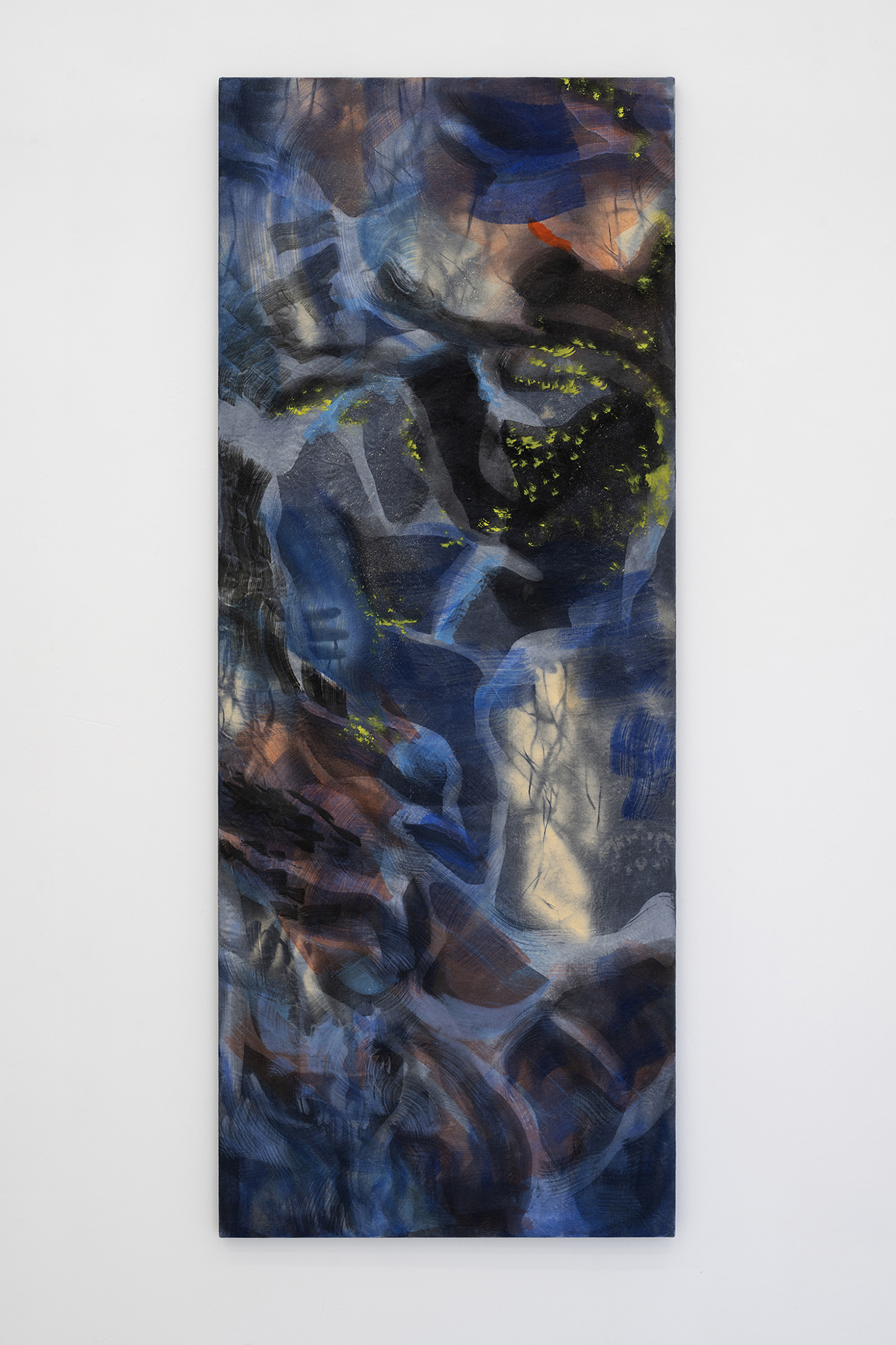
Ana Manso, “pulmão”, 2024 (Tie-dye, acrylic and oil on canvas, 180 x 70 cm).

Ana Manso, “pulmão” (detail), 2024 (Tie-dye, acrylic and oil on canvas, 180 x 70 cm).
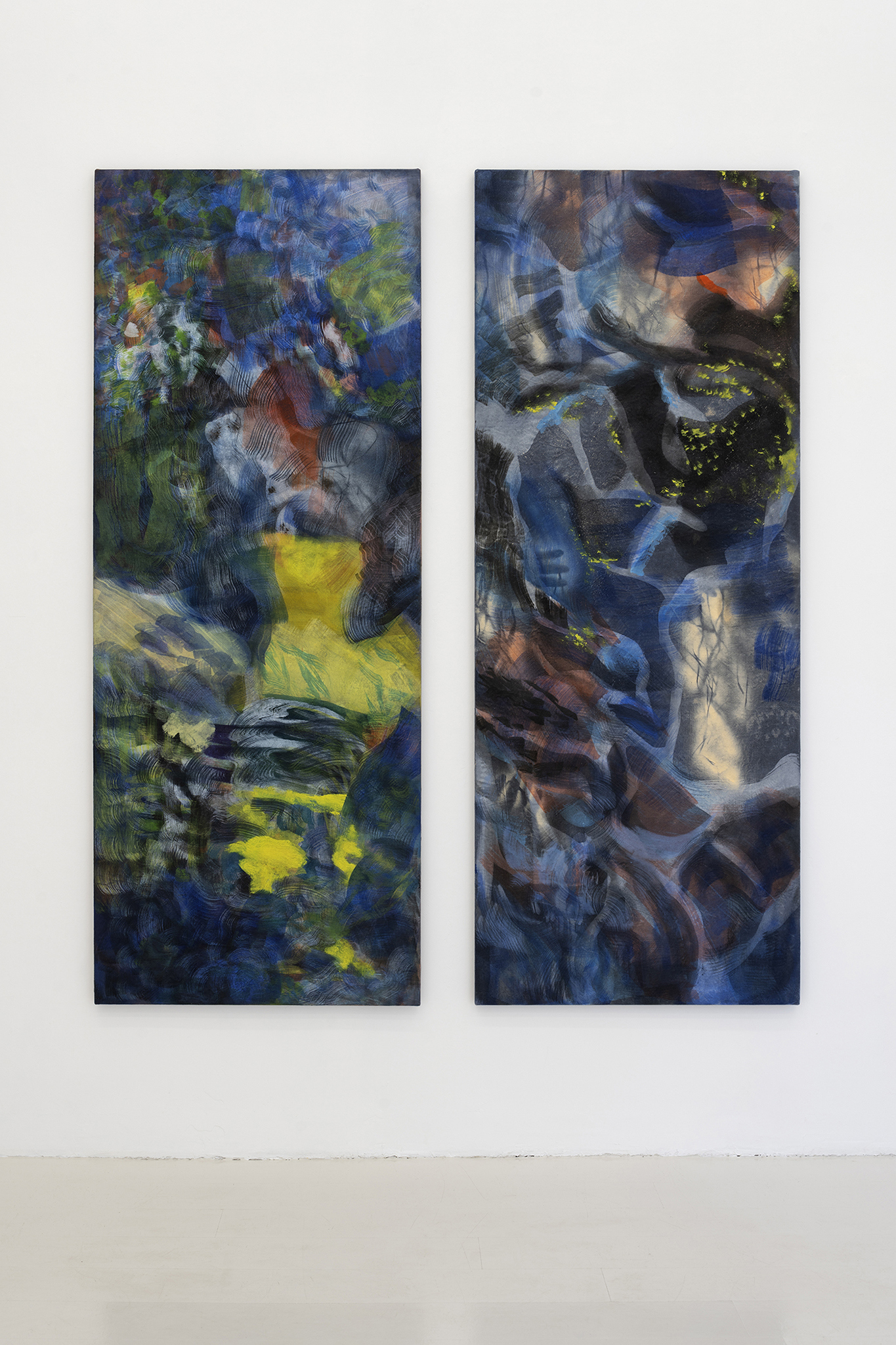
Ana Manso, “La Table Ronde” installation view.
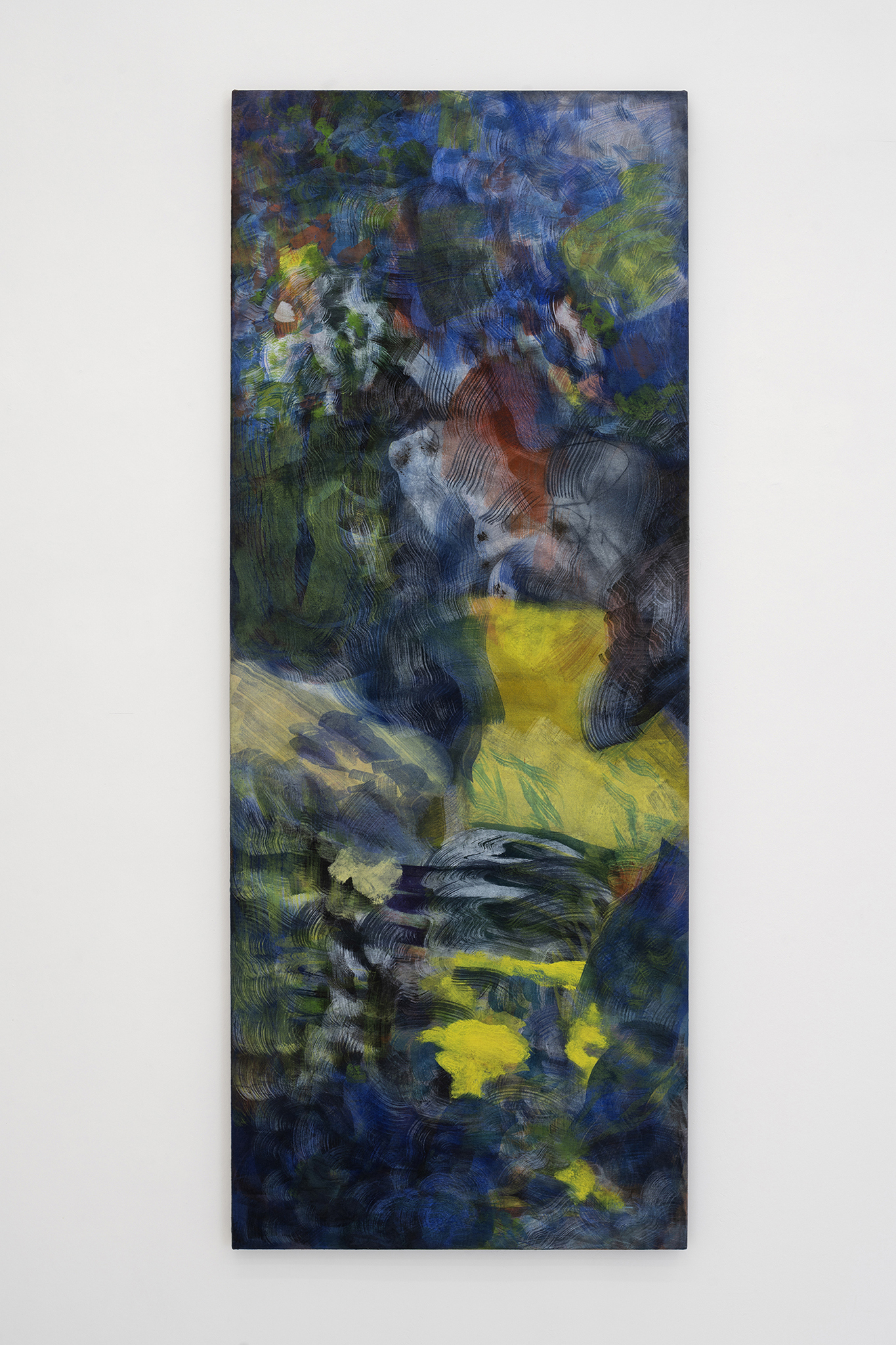
Ana Manso, animal”, 2024 (Tie-dye, acrylic and oil on canvas, 180 x 70 cm).
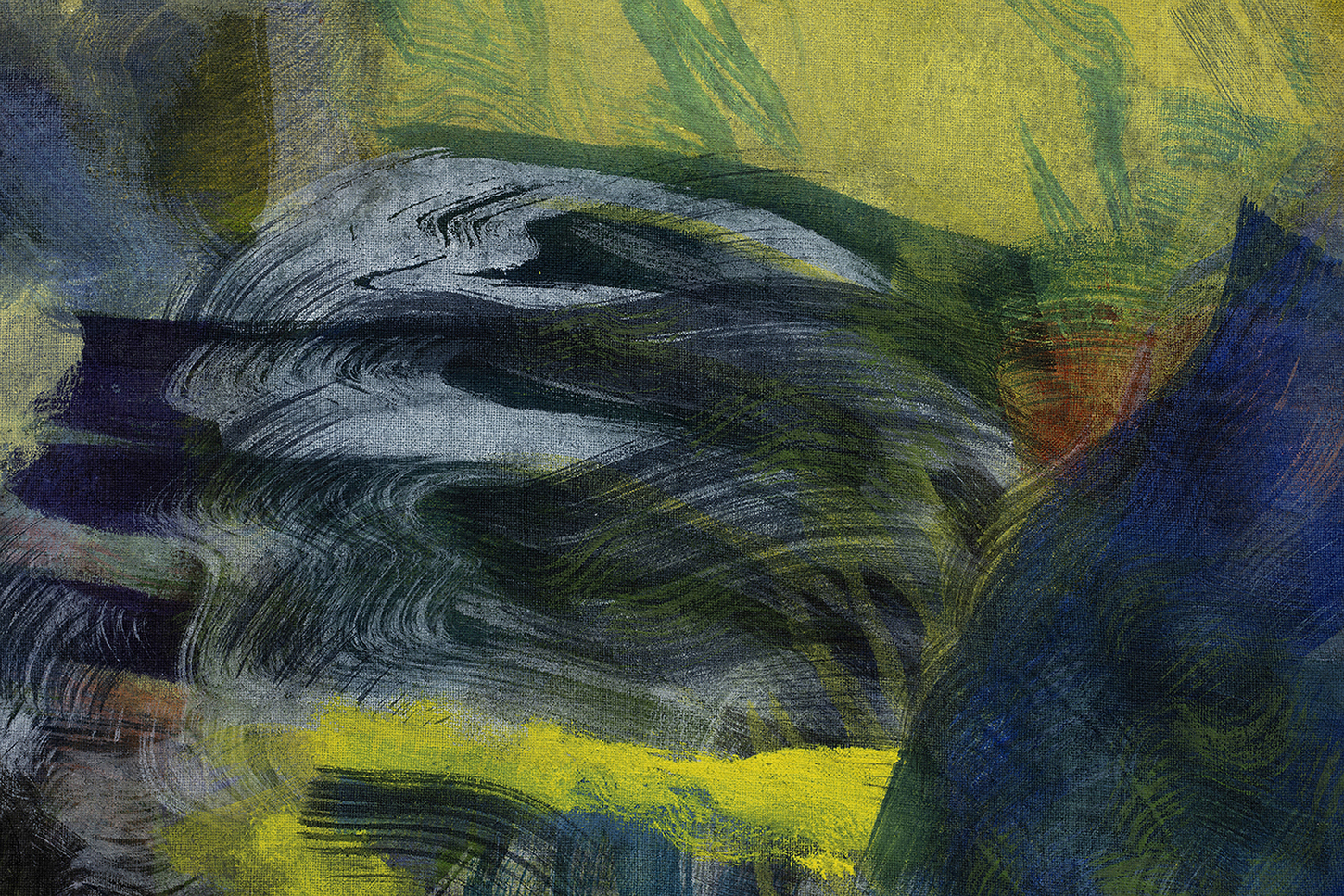
Ana Manso, “animal” (detail), 2024 (Tie-dye, acrylic and oil on canvas, 180 x 70 cm).
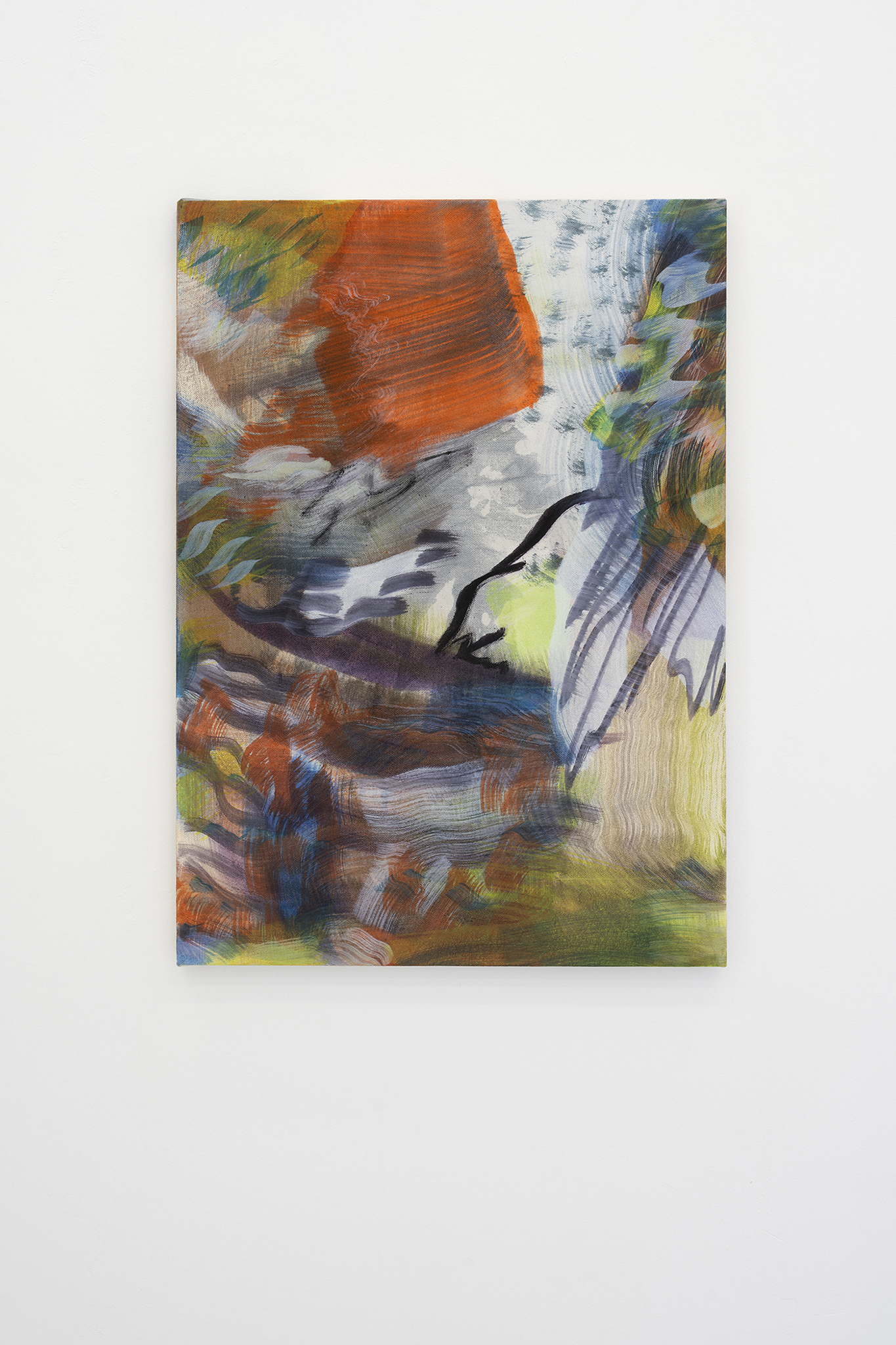
Ana Manso, “wider”, 2024 (Tie-dye, acrylic and oil on canvas, 70 x 50 cm).

Ana Manso, “the sound of cicadas”, 2024 (Tie-dye, acrylic and oil on canvas, 50 x 35 cm).
“When we try to pick out anything by itself,
we find it hitched to everything else in the Universe.”
John Muir(1)
A red round table is at the centre of a small canvas. It is not clear if we are indoor or outdoor, as some structures behind it could likely be a bookshelf or a building on the other side of a street. The table has a modernist shape but what is striking is the geometrical forms that in squares and triangles, circles and lines cover this picture, blurring the threshold between abstraction and figuration, or better overlaying them inconsistently. It is not surprising to find this kind of inconsistency in the art of Maria Helena Vieira da Silva,(2) her art swung beautifully between geometric abstraction and figuration during her long career, and “La Table Ronde”,(3) the painting just described and that gives the title to this new solo show by another Portuguese artist, Ana Manso, is a peculiar example of that. Another red table is in the room of Manso’s exhibition, it is composed of found materials, put together and painted by the artist. It is not an artwork, yet with its presence expands the exhibition and with negative space more than positive it actually completes it. Negative and positive spaces are crucial elements in Ana Manso’s paintings. Her process involves atypical treatments for her canvases, which often are processed by the artist before and after oil paint is traditionally applied to them. Most typically, she tie-dyes the fabric. A process which uses solvents and pigments to colour and create patterns and complex compositions permanently printed onto textiles, realised by first knotting and tying the canvas prior to being dipped in these substances. It is a way for Manso to eliminate the dichotomy between surface and painting, to surpass this juxtaposition and complicate it. In this way, when her delicate and gestural paint-strokes are laid onto the canvas they already need to respond to a complex surface. It is a painting on top of another painting, or better a circular process to which we are invited to partake when looking at her compositions and then follow closely the intricate and beautiful interweaving of surfaces and painting techniques. Circularity, as with the shape Manso gave to the table at the centre of this exhibition, is another crucial element in her work. It refers directly to the process from which her paintings originate: a non-hierarchical approach where the art and the artist have to respond to each other, ontologically questioning the single-sidedness of creation itself in a subversion where the classic hierarchy between subject (creator) and object (created) is opposed with a relational circularity instead. Circularity is crucial in the world around us too, from our own internal rhythms, to the way the moon controls nature, from the inside dynamic of a painting to the way a whole exhibition and the artworks composing it respond to each other. Manso’s shows have the particularity of being able to confuse also this hierarchy, when looking at “La Table Ronde” in this exhibition and realise it is not an artwork, at her typical tall and thin paintings just showing a glimpse of a composition and slicing the walls’ surface needing each other to expand their fragmented language, one could only but interpret that we are facing a practice where the whole is just as important, if not more important than its separate parts. This change of perspective is so important if one reflects upon it, both in philosophical and artistic terms. It deepens the way we can approach an exhibition, telling us to take it in as whole and not in pieces, that everything in an exhibition is connected to any other thing, and if this concept was to be expanded to what is outside of the exhibition space, Ana Manso’s language of circularity and interconnectedness all in a sudden profoundly enriches the way we look at nature and reality around us too.
_
(1) J. Muir, “My First Summer in the Sierra” (1911), p. 110.
(2) Maria Helena Vieira da Silva (13 June 1908 – 6 March 1992) was a Portuguese abstract painter and a leading member of the European abstract expressionism movement known as “Art Informel”.
(3) M. H. Vieira da Silva, “La Table Ronde”, 1940 (Oil and paper on canvas, 43,8 x 51,9 cm).
Mattia Lullini
